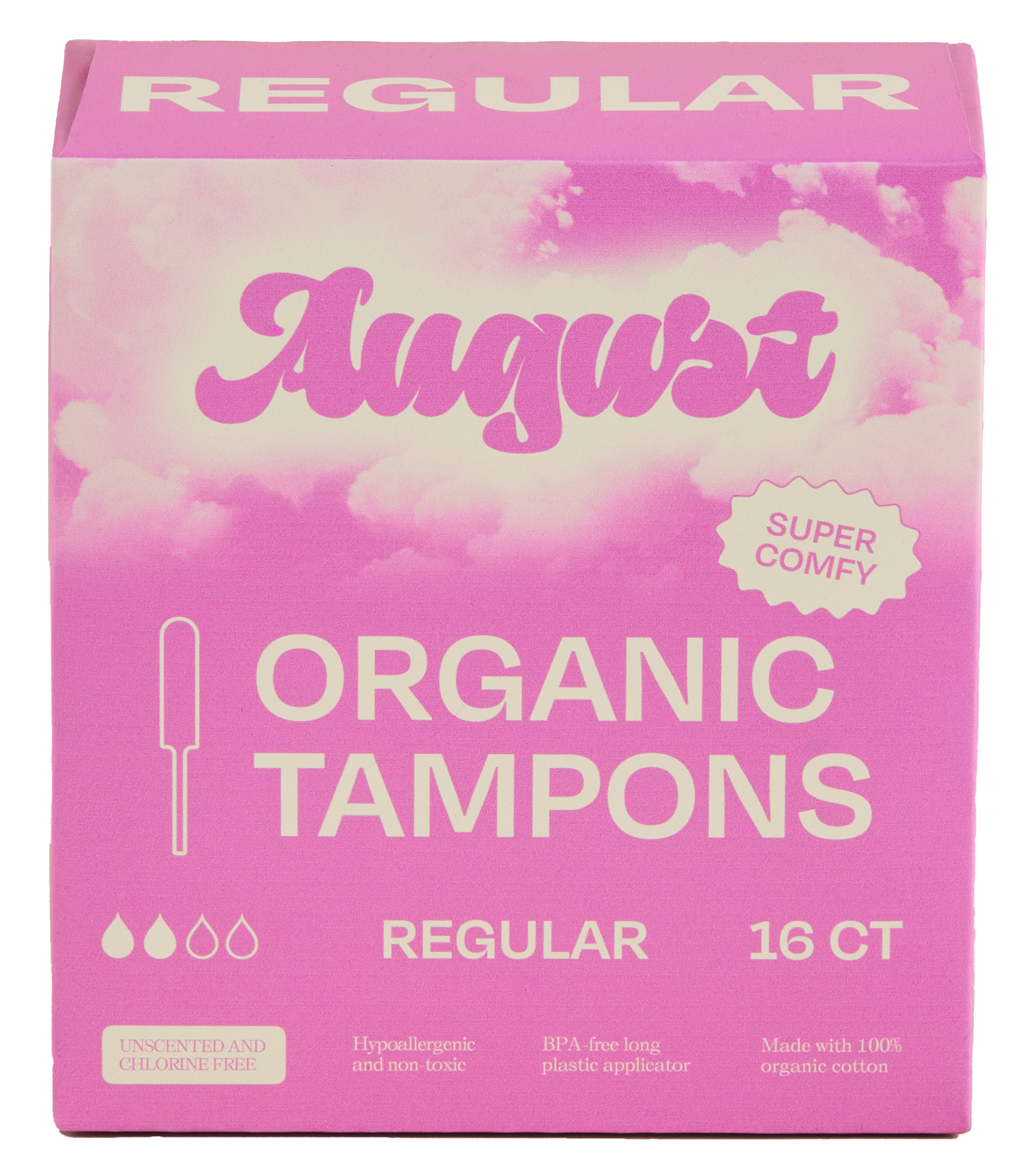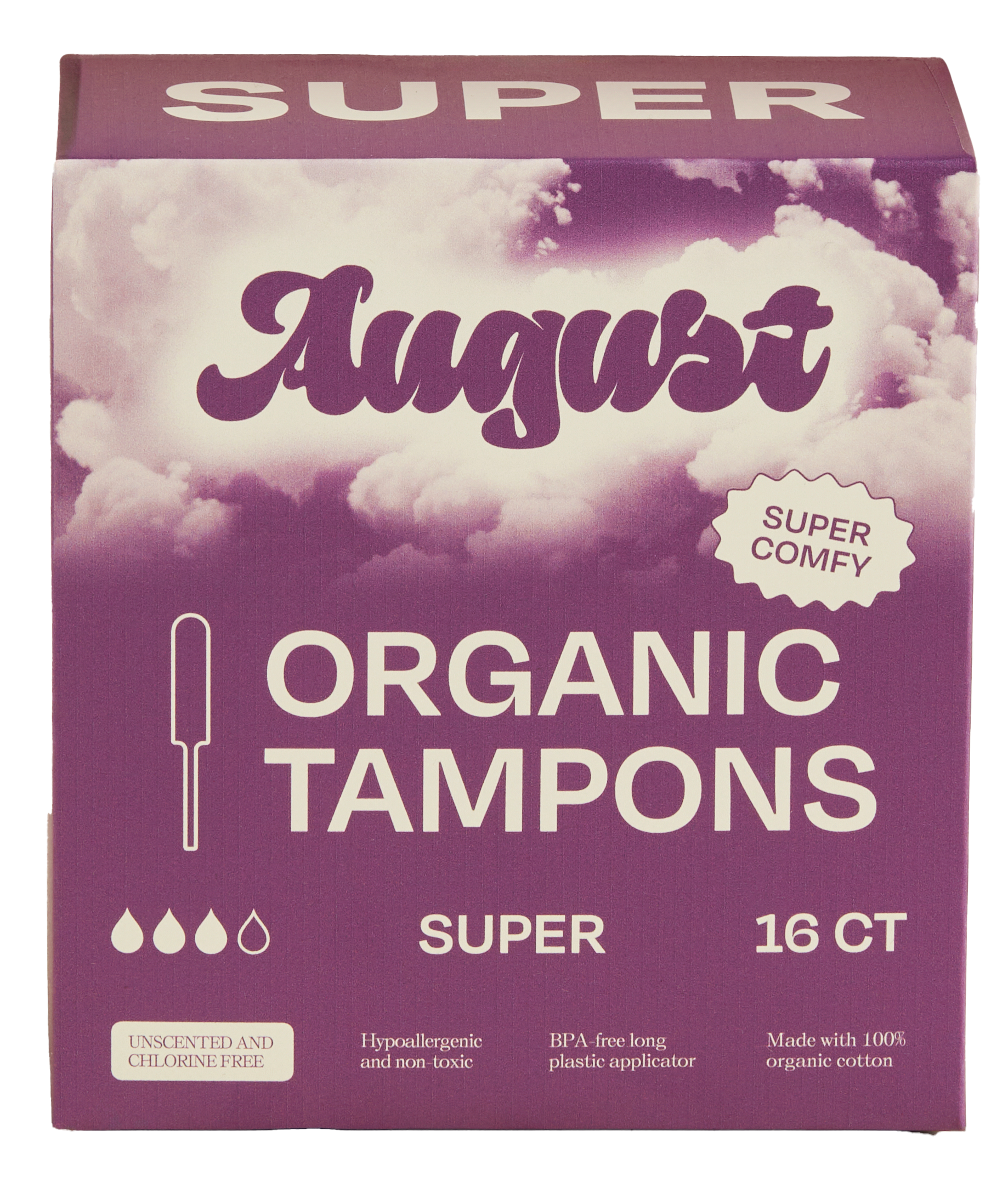September is Gynecological Cancer Awareness Month (GCAM)!
Gynecological cancers can affect menstruators and people who are AFAB.
According to the Foundation for Women’s Cancer (FWC), someone gets diagnosed with a type of gynecological cancer every 5 minutes.
To really understand what this month is all about and raise awareness, let’s first breakdown what exactly GCAM means…
We know that medical jargon can get confusing and complicated sometimes but August is here to help!
What are the different major forms of gynecological cancer?

As shown in the image above, gynecological cancers have been categorized by the American Association of Cancer Research to make this conversation more digestible for all.
The categories include:
-
Ovarian Cancer: there are 3 types of ovarian cancers, each starting in a different part of the ovary.
-
Uterine Cancer: includes 2 forms of cancers that are formed in uterine tissue (Uterine Sarcoma and Endometrial)
Endometrial may sound familiar and that’s because there’s a menstrual disorder called Endometriosis. While Endo is not a cancer, they both have to do with the lining of the uterus (aka the endometrium). The tissue of the endometrium is where endometrial cancer forms.
-
Cervical Cancer: caused by a cervical infection, which is almost always caused by human papillomavirus (aka HPV). It’s important to get screened for HPV and unusual cells to detect this early on!
-
Vaginal Cancer: this category is centered in the vagina (not to be confused with vulva).
Vaginal cancer is also linked to HPV infections. The most common vaginal cancer is squamous epthelilum, which, simply put, is cancer in the vaginal lining and surface.
Vaginal cancer is the least common form of gynecological cancer out of the different categories. Generally, it affects those that are between ages 50-70.
- Vulvar Cancer: happens externally of the vagina, usually affecting the labia majora (aka the outer lips of your vulva).
Factors that may put you at greater risk include: a history of genital warts or abnormal cell growth on the skin surface for a long time, or an HPV infection.
What are the symptoms and risk factors of gynecological cancers?

Every body is different which means signs and symptoms will vary! Each cancer also has its own signs to look out for.
However, per the CDC’s recommendations, one sign to keep an eye out for (and let your doctor know) is any form of unusual bleeding. That is, surprise bleeding between periods or if your periods are longer than usual.
Other common symptoms of possible gynecological cancers include:
- pain or pressure in your pelvic area
- frequently needing to pee
- abdominal pain and bloating
- any sort of bleeding or discharge that is out of the ordinary
These symptoms may be caused by things other than cancer, but always worth noting and bringing up to your doctor.
If it’s another infection or disorder, your doctor should be able to provide you with the necessary information and next steps you should take for your health!
Risk for cancers increases with age.
So, if you or a loved one are experiencing menopause or have gone through it, check in with your body and pay attention to anything unsual.
Is there any way I can prevent getting Gynecological Cancer?

Early detection can save lives.
Otherwise, and unfortunately, there are no direct ways to fully avoid or prevent cancers.
So how can you catch the early signs?
-
The easiest step you can take is to educate yourself and others on symptoms and the different types of gynecological cancer. Awareness is SO important and oftentimes a barrier to detecting it early (as reported by the FWC).
-
If you think something is wrong or aren’t getting answers, advocate for yourself! We know this may be hard to do sometimes so we put together a little guide to help you out when navigating these situations <3
-
Gynecological cancer can be experienced at the same time as other illnesses, infections and menstrual disorders. Tell your doctor if you experience any abnormal changes or discomfort throughout your cycle, around your vulva, or reproductive organs (your ovaries, vagina and uterus).
-
Go in for those regular check ups and pap smears! They are a great way to establish a relationship with your doctor, see if everything is okay and check for precancerous or cancerous cells. If you are between 21-29 it's recommended you get a pap smear around every 3 years!
How can I continue the conversation and raise awareness?

Don’t be afraid to spark conversations about GCAM this month (and beyond) with your friends and family!
It’s important that we all continue to educate ourselves on forms of cancer that affect over 100,000 people a year.
You can also share informational resources and support organizations that fund research and early detection.
And lastly, consider joining our Inner Cycle community: a space to share your menstrual experiences, and be heard by a welcoming community of menstruators and non-menstruators!































